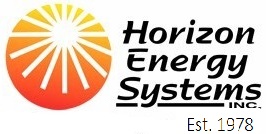Location: Bartow, FL
Owner/Builder: Fred Clark
Home Energy Systems designed by: Brad Lindsay
Data Acquisition by: Subrato Chandra, PH.D Florida Solar Energy Center
Project Energy Partners:
Horizon Energy Systems
Hulbert Homes
Lennox Air Conditioning
Natural Light Tubular Skylights
Photos of this project: click here
O.P.E.R.A. Energy House
The focus of this home design is to shift as much power use to off peak hours as possible without affecting lifestyle, comfort or quality of life.
Electrical demand (during on peak hours), is rising and auxillary power plants must be built to meet this demand. If future homes were designed in such a way that most of the electrical demand was used during off peak times, the building of these expensive power plants could be reduced. This saves our resources, reduces high pollution times, curbs energy increases and can easily be avoided.
History of home building:
Since this country was settled first in cold climates, the generations before us learned quickly how to deal with keeping warm and staying alive. Free standing wood burning stoves heated the small homes from the center of the house. Wood had to be chopped and being human, the closest trees were cut down for fuel. Keeping heat in the house became a major concern and it was found that by putting something, anything above the ceiling would equate to less hours on the axe and more time in the house. Cow dung, straw, old clothes, burlap bags, wood chips, all made a difference by resisting the flow of convective and conductive heat. The house was definately warmer and hands had less callouses from chopping wood.
We now use a variety of fibrous insulation products to resist (R-Factor), the flow of convective and conductive heat: blown fiberglass, batt fiberglass, blown cellulose, rock wool even shredded blue jeans are being sold as non-toxic, non irritiable insulation. These products work very well for what they were designed for: resisting the flow of heat out of a home. Fill the walls and ceilings with insulation and use less fuel for heating. The higher the R factor, the more you save. So impressive are these products that National codes dictate minimum levels for all home builders before homes can be sold. City inspectors measure each home before occupancy certificates are granted.
HOT CLIMATES
While fibrous insulation is effective at resisiting the heat flow from a building, it falls short of protection from heat flow when subjected to the effects of infrared heat. Unlike convective or conductive heat which is a type of heat movement, infrared heat is an electromagnetic wave, like microwaves, sound or light and can only be stopped by being absorbed or reflected. Moving at 186,000 miles per second (speed of light), this invisble source of heat "sees" through fibrous insulation as it's emitted from hot walls and hot roofs.
Home builders for decades have been forced by mandated building codes to pack homes full of fibrous insulation products in the walls and ceilings in an attempt to "resist" (R Factor), the flow of heat into or out of homes. These codes even dictate how much and where this insulation is to be placed. Designed for cold climates to keep heat in (like wearing a sweater during the winter), insulation resists the movement of conductive and convective heat movement from a home. However, there are 3 known types of heat movement:
- Convection
- Conduction
- Radiation
Since conventional fibrous insulation is rated only for resisting two of the three types of heat movement, it stands to reason there is a piece missing from the pie. Controlling this missing piece regarding radiant heat flow into or out of buildings dictates the need for one or more reflective surfaces with a low emissivity. This product is called a "radiant barrier system" (RBS). RBS is a thin, reflective membrane that changes the direction of infra red radiant heat. Conventional fibrous insulation products do not address radiant heat as there is no reflective surfaces. Further, when immersed in a bath of radiant heat, fibrous insulation has a tremendous capacity to store heat for hours after the sun goes down making your home hot and requiring energy to remove it. Change the direction of radiant heat and energy consuming convective and conductive move with it.
Testing on full size, identical homes by Arizona State University in 1986 have proven that a much higher level of thermal performance, energy reduction and interior comfort can be reached using only quality radiant barrier products. The logic is simple: Use mass as a heat exchanger and change the direction of infra red heat using RBS at the exterior and roof of the home as opposed to resisting heat flow using conventional fibrous insulation products. Twenty years of defining and refining products for this home produced the O.P.E.R.A. House: On Peak Energy Reduction Architecture.
Fred Clark, a residential and commercial builder in Bartow Florida, is the owner/builder of this home is using the designs, products and applications provided by Horizon Energy Systems.
This home is designed to maximize the use of off peak power by using a combination of RBS to keep the heat out during the summer and heat in during winter while the mass walls keep the interior temperature within a few degrees. During the hot season, the A/C will run only at night when it's more efficient by removing heat from the mass walls using long run cycles. During the day the walls then absorb any heat gain from windows, doors, appliances or occupants. Since the walls are always cooler than body temperature, the mean radiant temperature (MRT) of each room stays at a comfortable level. During cold months the reverse is done and the walls are heated during the day using a solar water heater built into the exterior walls. MRT may soon become the benchmark by which the comfort of homes is measured
Human Comfort
In the past, air temperature, humidity and air movement have been considered the primary concerns when considering human comfort. However, we now know that that the subtle effects of infrared heat gain and loss has a profound effect on our comfort.
Human skin has the highest known a value of emissivity (.98), which means, in layman's terms, radiant heat emits from our bodies faster than any other surface known to man. Conversely, we are also excellent absorbers of infrared heat and our bodies respond according due to sensory organs located at key points in our skin. Thermal response results from two sets of sensory organs within the skin.
- The first of these, the Bulbs of Krause, are sensitive to heat loss. They number around 150,000 and lie within 0.5mm of the surface of the skin. Whilst spread throughout the body near the openings to sweat glands, there is some increased concentration around the fingertips, nose and bends of the elbow.
- The Organs of Ruffini, however, are sensitive to heat gain and number only around 16,000. These lie much deeper within the skin, mostly around the lips, nose, chin, chest, forehead and fingers. Due to the increased insulation provided by skin depth, these are much slower to react to changing environmental temperature than the bulbs of Krause.
These two sets of organs allow us to sense our thermal surroundings, allowing us to determine if we are gaining or losing heat. As warm-blooded mammals, humans produce energy by metabolizing food, with most of this energy taking the form of heat. This metabolic heat is produced by the body all the time, mainly as a result of muscular activity, although almost all bodily functions produce some heat. In general the more active we are, the more heat we produce. (source: click here)
When the MRT in a room becomes negative we feel cold. When the MRT in a room is positive, we become warm. The goal of this home is to keep the MRT at a level where comfort is controlled by the surfaces around you as opposed to conditioning the air which uses more energy. This concept greatly reduces the need for mechanical heating and cooling. In fact, calculations for this home indicate only 2.4 tons of cooling will be needed to maintain comfort.
Homes built like this in the desert of Phoenix Arizona have been using 92% of the power during off peak periods and have unmatched interior comfort and energy bills that are a fraction of conventionally built and insulated homes. Widespread use of this type of building would decrease the need for on peak power, allow for growth and expansion without a need for power plants to handle demand and allow electric utilities to use power generation equipment more efficiently. In short, a win win for everyone. The homeowner gets a comfortable energy efficient home, metropolitan areas will have reduced pollution due to more power being used off peak and utilities can meet growth and expansion without the need for more power plants.
It is a primary goal of OPERA House to not only use grid power more efficiently but also create a more comfortable environment by using logic and basic physics. It's time we re-evaluate not only construction methods that have remained basically unchanged for generations, but how the environment around us affects our comfort and the energy required to create it.
Home Features:
- All walls, ceilings and roof decking will be thermally protecting using only our patented RBS products. No fibrous insulation will be used in this home.
- The West wall will generate sufficient hot water using solar energy and RBS to meet the total needs of the home for domestic hot water and space heating during the winter.
- Mass walls around the perimeter and strategically placed interior mass walls maintain interior comfort within a few degrees.
- Solar heated hot air from the attic will be drawn into a modified clothes dryer eliminating the need for a 6000 watt heating element and exhausting 1400 cfm of conditioned air to the outside.
- Underground return ducts and supply ducts inside the conditioned space reduce heat gains and losses and allow for air conditioning (humidity and filtration)
- Low voltage lighting and tubular skylights reduces heat gain
- Low E Glass reduces heat gain through the windows
- Increased attic venting at the eves and roof peak to minimize attic temperature
Return to Fred Clark's home click here
Click here to visit our main page.
For more information on this type of building click here
To have your home plans reviewed or to build an OPERA House click here
Questions? Email us at pleasesavenrg@gmail.com or call our office at 602-867-3176.

 Contact us: 602 867 3176
Contact us: 602 867 3176 



